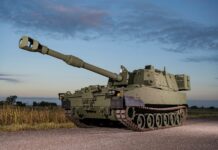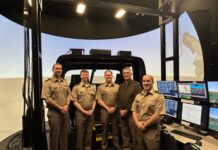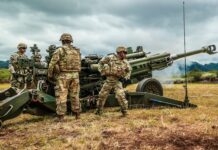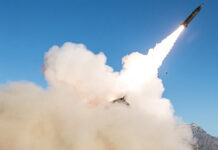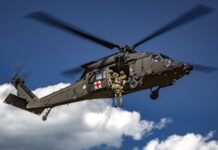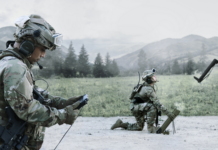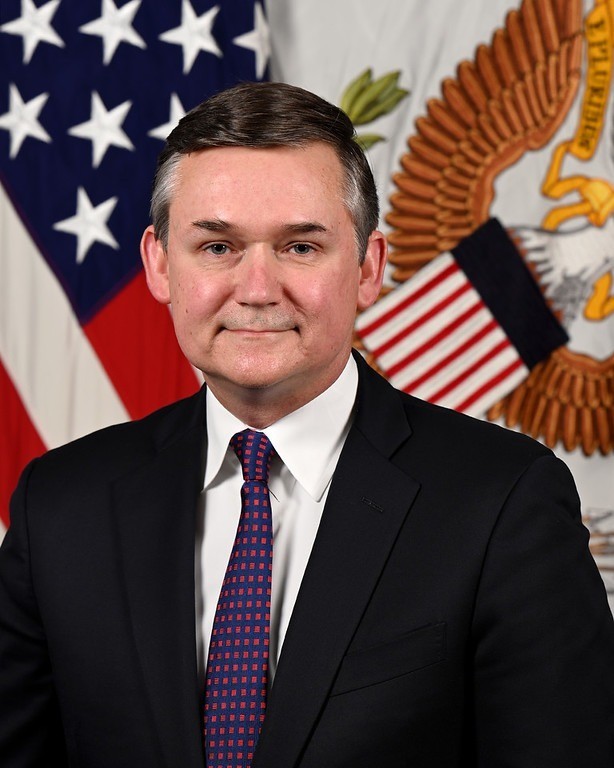
IAV 2024: senior acquisitions chief outlines the essentials for US Army AFV procurement
Peter Felstead
A senior US acquisitions official with the Department of the Army used the opportunity of the Defence iQ International Armoured Vehicles (IAV) conference, held in Twickenham, London, from 22-25 January 2024, to outline how the US Army is adapting its AFV procurement to meet the challenges of the 21st Century battlefield.
In his keynote address at IAV 2024 Douglas R Bush, Assistant Secretary of the Army for Acquisition, Logistics and Technology, emphasised rapid development, the centrality of software and the Pentagon’s adoption of the Modular Open Systems Approach (MOSA) as essential to current and future US AFV procurement.
Notwithstanding these initiatives, Bush opened his speech by stating how certain current US Army AFVs are still in full production while noting that a significant ramp-up in AFV spending is in the offing.
“From 2019 to 2023 the US Army invested around USD 8.9 billion in researching and procuring new armoured vehicles, while between 2024 and 2029 this figure will be around USD 17 billion,” said Bush.
“Our current version of the M1 [Abrams] tank, the M1A2 SEPv3, is still in high-rate production in Ohio. The Bradley [infantry fighting vehicle], actually our M2A4 version, our latest, is also still in very high-rate production in Pennsylvania.”
“We’re still building Stryker [infantry carrier] vehicles,” Bush added. “We’re still refreshing that fleet and finding new ways to use the Stryker, for example as an air defence vehicle.”
Meanwhile, Bush noted that the US Army has recently entered production with two new AFVs: the M10 Booker assault gun and the Armored Multi-Purpose Vehicle, which will replace the army’s family of M113-based AFVs.
Of the US Army’s future AFV fleet, Bush mentioned the XM30 (formerly known as the Optionally Manned Fighting Vehicle), which will be the army’s new IFV after several aborted attempts to replace the Bradley, and the M1E3, which will be the US Army’s new standard of main battle tank.
On the latter he said, “I can’t go into a ton of detail, but this is going to be a fundamentally different Abrams tank designed for the future; not an incremental upgrade. So that programme is going to be a rapid development programme and we hope to be in production in the 2030s, early 2030s, to start equipping units.”
Bush noted that one aspect of US Army procurement that has been “foundational and very important is our attempt to truly embrace and actually do modular open systems, so rather than having one prime contractor fully and tightly integrate the vehicle, we are trying from the start to have a system of systems in that vehicle that allows for future upgrades by maybe companies that don’t even exist yet, using tech that doesn’t exist yet”.
A second aspect to future US Army procurement, noted Bush, is that “built inside that modular design is a whole new approach to software”. This, he explained, is a ‘software pathway’ “very closely modelled on how private industry does software with constant updates”. This means that “we see the software itself as just as important as the rest of the vehicle. It is no longer an enabling thing; it is the thing,” he said.
“We have to have open systems that we can upgrade rapidly, and we have to have software we can upgrade rapidly to stay ahead of the enemy,” said Bush.
In relation to the XM30 and M1E3, Bush said there is “a very strong possibility that we will have our first hybrid electric powerpacks in those vehicles”. He explained that this was advantageous “not just from a fuel savings standpoint, but also in terms of operational capability, since it will “allow us to reduce the weight in both vehicles, and certainly the number of trucks that have to come behind them with fuel”.
While noting that systems like the M1 Abrams have allowed the US Army to achieve dominance in terns of armour, Bush cautioned that “the weight factor has finally crossed a point where mobility is becoming a serious concern, crossing bridges even, and other difficult terrain”.
He also noted the sheer size of the logistics train behind an armoured force.
“When we provided our tanks to Ukraine, everything that came behind it kind of dwarfed the 31 tanks we provided,” he said. “If you look at the number of shipping containers, spare parts, fuel trucks, it’s a reminder that, in combat, an armoured force has a huge logistics element.” Bush emphasised that “in the future that has to be smaller, and that’s a major effort”.
Bush also noted how US Army thinking has to account for unmanned systems, both in defending against massed attacks from unmanned aerial vehicles/loitering munitions and in integrating manned and robotic platforms, whereby the latter are no longer considered an add-on to formations but an integral part of them.

With regard to Ukraine, Bush told the audience that the conflict there had offered a lesson in the potential speed of procurement. “Ukraine has tested us and how fast we can go … but it’s the same way we would rapidly try to support ourselves,” he said. “Congress has opened the aperture quite a bit and given us way more flexibility than we used to have. … I had many more rapid acquisition authorities and tools than my predecessors had, and we’re using them ruthlessly to do things much faster with Ukraine.”
While this may, indeed, be commendable and true, further US military support for Ukraine is currently being blocked in the US Congress by Republican acolytes of former president Donald Trump who are holding Ukraine aid hostage over arguments for stronger US border security. Asked by ESD for his view on this situation, Bush replied, “I’m not going to speak to the politics of such things. Congress reflects the will of the American people, so Congress decides, and I think we’ve made a great case [to continue supporting Ukraine militarily]. And I’m confident, I’m optimistic, cautiously, but optimistic, that we’ll get what we need and be able to continue support.”



